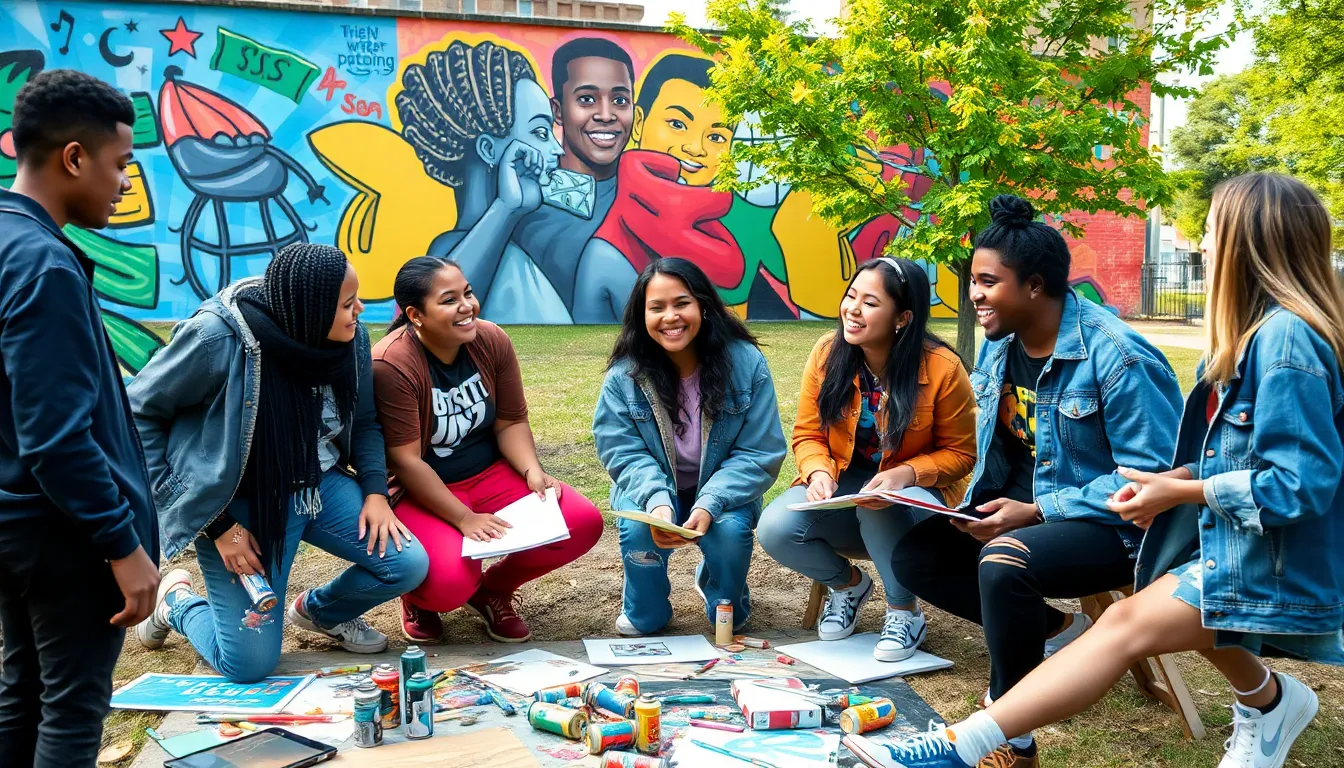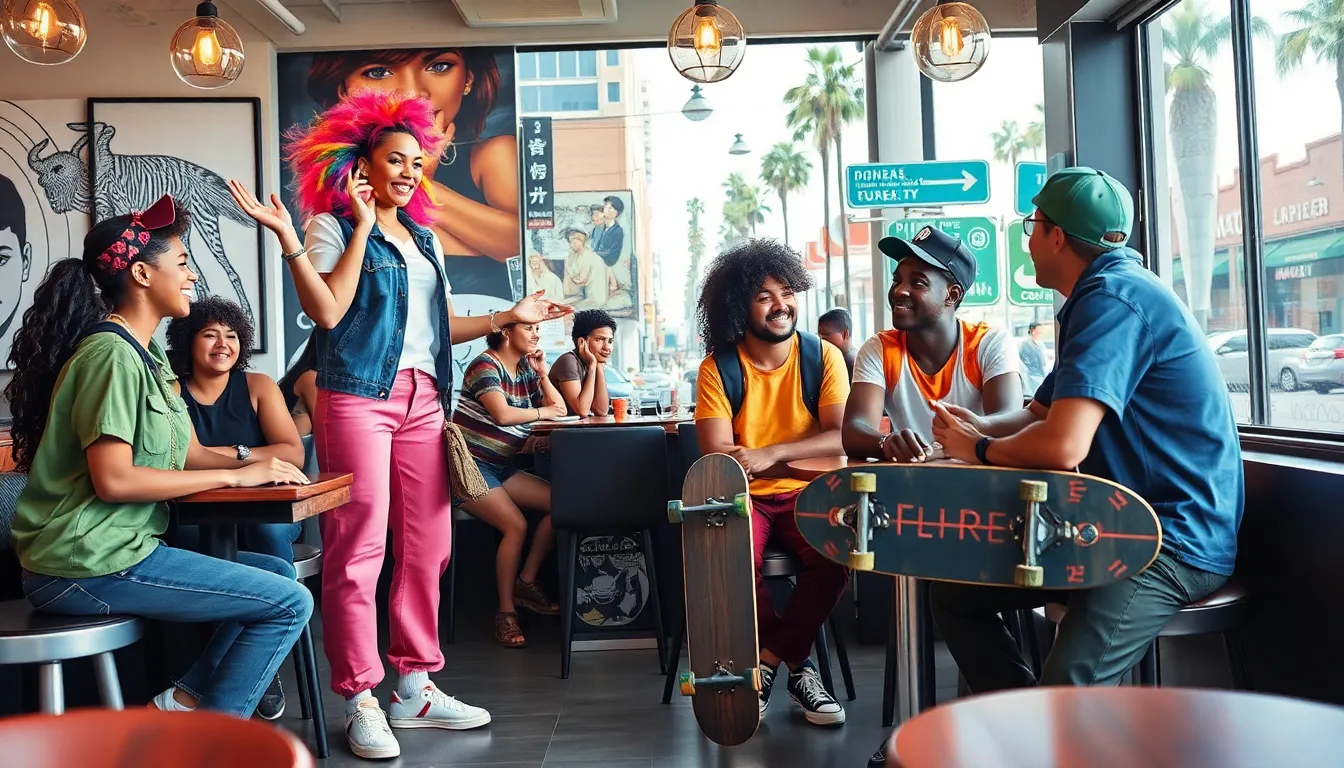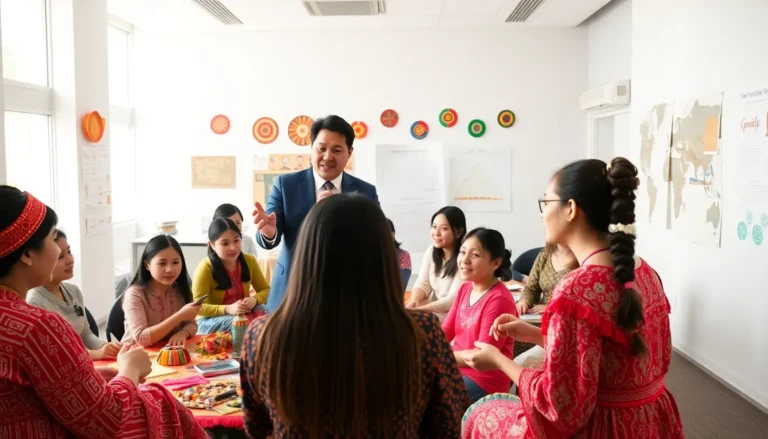In a world where trends come and go faster than a cat video can go viral, the term “vibe shift” has emerged as the latest buzzword. It’s not just a fleeting phrase; it’s a cultural phenomenon that encapsulates the ever-changing landscape of our social lives. Whether it’s a new fashion trend or a fresh take on music, understanding vibe shifts can help anyone stay ahead of the curve and avoid looking like yesterday’s news.
Imagine walking into a room and sensing an unmistakable change in the atmosphere. Suddenly, what was once cool is now so last season. Embracing these shifts isn’t just about keeping up; it’s about thriving in a world that rewards adaptability and creativity. So, buckle up as we dive into the nuances of vibe shifts and discover how to navigate this colorful tapestry of modern culture.
Table of Contents
ToggleUnderstanding Vibe Shift
Vibe shift encapsulates the spontaneous changes in cultural trends that define contemporary society. Recognizing these shifts enables one to adapt and thrive.
Definition of Vibe Shift
A vibe shift signifies a noticeable transformation in collective attitudes, preferences, and behaviors within society. It often manifests in areas like fashion, music, and social interactions. For example, a shift might occur when a new music genre gains popularity, impacting clothing styles and social norms. Cultural influencers play a crucial role in facilitating these changes, creating an environment where new ideas emerge and establish themselves.
Historical Context
Vibe shifts aren’t a modern phenomenon. They’ve historically influenced societies at various times. The 1960s marked a significant shift with the rise of counterculture, significantly affecting music and youth fashion. In the 1980s, the introduction of hip-hop brought a new style and attitude, reshaping cultural expressions. Each decade brought its own set of shifts, reflecting the changing values and priorities of society. Understanding these historical contexts provides insight into current trends and helps predict future changes.
Cultural Implications of Vibe Shift

Vibe shifts significantly influence cultural phenomena, shaping various aspects of society. These transformations introduce new social trends that often redefine collective priorities and preferences.
Influence on Social Trends
Social interactions evolve as collective attitudes shift. Emerging trends reflect changing norms and values, which can be seen on social media platforms. Within urban centers, youth culture often embraces these trends, fostering new styles and communication methods. Influencers play a crucial role in amplifying these changes, leading to widespread adoption of fresh social practices. As a result, brands respond quickly, aligning their marketing strategies with current shifting desires. A keen understanding of these trends proves essential for businesses to remain relevant in competitive markets.
Impact on Art and Music
Artistic expression undergoes transformation alongside vibe shifts, breathing freshness into creative landscapes. Artists and musicians adapt their work, often mirroring the sentiments of their audience. Emerging genres combine different styles, reflecting the diverse influences dominating contemporary culture. For instance, the fusion of electronic sounds with traditional instrumentation illustrates a broader trend of inclusivity in music. Visual art also reacts, as artists create pieces that resonate with evolving societal themes. Such dynamism fosters innovation, encouraging new forms of artistic collaboration and experimentation.
Examples of Vibe Shift
Cultural trends shift frequently, influenced by various factors across different communities and pop culture. Notable instances showcase how quickly the collective mindset can change.
Notable Moments in Pop Culture
The early 2000s saw a drastic shift with the rise of social media platforms, altering how celebrities interacted with fans. Influencers like Kim Kardashian made personal branding central to fame, redefining traditional celebrity. In music, the introduction of streaming services transformed access to artists, leading to the rise of genres like lo-fi hip-hop and bedroom pop. Fashion also experienced significant changes, with vintage trends becoming mainstream. This blending of styles demonstrated the versatility of cultural currents and their ability to resonate with broader audiences.
Case Studies in Different Communities
New York City’s art scene exemplifies a vibe shift affecting local communities. Gentrification and demographic changes brought diverse artistic expressions from emerging artists. In contrast, the tech hubs in Silicon Valley showcase a different shift, emphasizing sustainability and innovation in their cultural narratives. Urban youth culture in Los Angeles reflects the influence of streetwear and skate culture, highlighting the impact of local trends. These case studies illustrate how vibe shifts manifest in unique ways, driven by community values and artistic collaboration.
The Psychology Behind Vibe Shift
Vibe shifts reveal much about human psychology and social dynamics. Change happens as individuals react to evolving trends, often leading to substantial lifestyle adjustments. People adapt their behaviors and preferences, creating a ripple effect throughout communities.
Human Behavior and Adaptation
Adaptation is crucial in response to vibe shifts. Individuals often feel pressure to align with current trends to fit in or express individuality. Changes in personal identity frequently occur when new styles gain popularity, impacting choices in fashion or music. Young people, in particular, embrace these shifts, as they seek authenticity and self-expression. Influencers play a major role as they model actions that resonate with audiences. These behaviors can transform entire social circles, reflecting collective attitudes and preferences. Ultimately, the instinctual drive to connect results in communities reshaping themselves to reflect new cultural paradigms.
The Role of Social Media
Social media significantly accelerates vibe shifts in contemporary culture. Instant communication enables trends to spread rapidly across platforms. Viral content shapes the context in which cultural norms evolve, influencing preferences in real-time. Users share their experiences, opinions, and styles, driving others to adopt similar behaviors. Trends born in small online spaces often gain traction beyond their origins, resulting in widespread acceptance and adaptation. Data shows that social media engagement increases over time, making it a powerful tool for cultural transformation. As a result, online platforms serve as both catalysts and barometers for vibe shifts, illustrating their profound impact on society.
Embracing vibe shifts is essential for navigating today’s dynamic cultural landscape. These transformations reflect deeper societal changes that influence everything from fashion to artistic expression. By understanding the forces driving these shifts, individuals and brands can adapt and thrive in an ever-evolving environment.
The interplay between influencers and social media accelerates these changes, creating a vibrant tapestry of trends that resonate with diverse audiences. As society continues to evolve, staying attuned to these shifts not only fosters creativity but also strengthens connections within communities. Engaging with vibe shifts can lead to richer experiences and a deeper appreciation for the cultural currents shaping our world.








